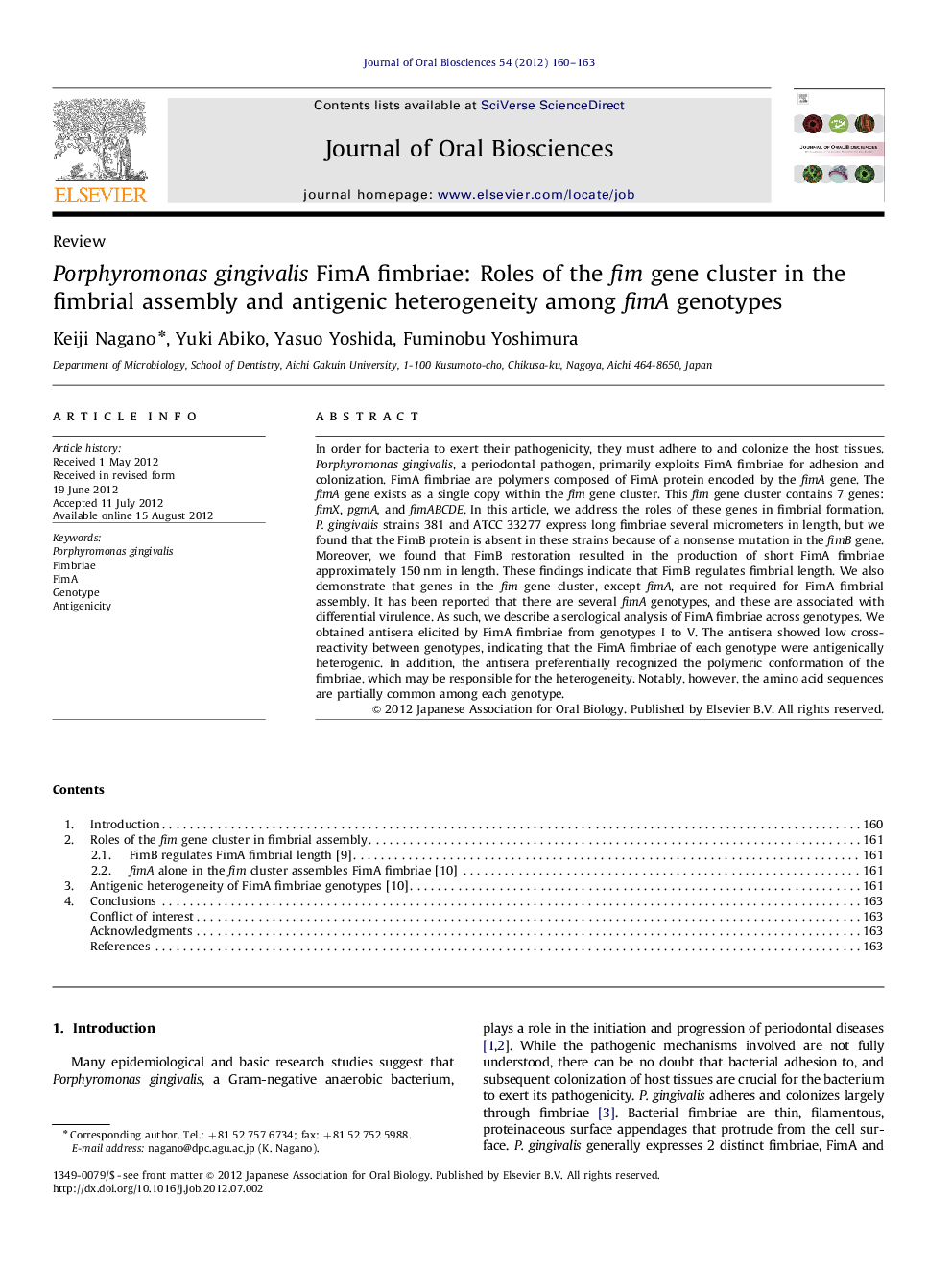| Article ID | Journal | Published Year | Pages | File Type |
|---|---|---|---|---|
| 10163707 | Journal of Oral Biosciences | 2012 | 4 Pages |
Abstract
In order for bacteria to exert their pathogenicity, they must adhere to and colonize the host tissues. Porphyromonas gingivalis, a periodontal pathogen, primarily exploits FimA fimbriae for adhesion and colonization. FimA fimbriae are polymers composed of FimA protein encoded by the fimA gene. The fimA gene exists as a single copy within the fim gene cluster. This fim gene cluster contains 7 genes: fimX, pgmA, and fimABCDE. In this article, we address the roles of these genes in fimbrial formation. P. gingivalis strains 381 and ATCC 33277 express long fimbriae several micrometers in length, but we found that the FimB protein is absent in these strains because of a nonsense mutation in the fimB gene. Moreover, we found that FimB restoration resulted in the production of short FimA fimbriae approximately 150Â nm in length. These findings indicate that FimB regulates fimbrial length. We also demonstrate that genes in the fim gene cluster, except fimA, are not required for FimA fimbrial assembly. It has been reported that there are several fimA genotypes, and these are associated with differential virulence. As such, we describe a serological analysis of FimA fimbriae across genotypes. We obtained antisera elicited by FimA fimbriae from genotypes I to V. The antisera showed low cross-reactivity between genotypes, indicating that the FimA fimbriae of each genotype were antigenically heterogenic. In addition, the antisera preferentially recognized the polymeric conformation of the fimbriae, which may be responsible for the heterogeneity. Notably, however, the amino acid sequences are partially common among each genotype.
Related Topics
Life Sciences
Biochemistry, Genetics and Molecular Biology
Clinical Biochemistry
Authors
Keiji Nagano, Yuki Abiko, Yasuo Yoshida, Fuminobu Yoshimura,
